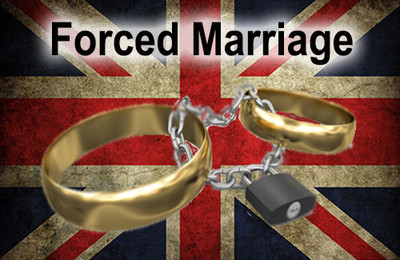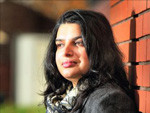by Dore Gold
Last weekend,
the International Atomic Energy Agency published one of its regular
reports on the status of the Iranian nuclear program. This report was
particularly important because it was coming out right before this
week's critical meetings in Geneva between Iran and the P5+1, where it
would be decided whether sanctions against Iran would be reduced in
exchange for concessions on the Iranian nuclear program. Many experts
wanted to know if the Iranians slowed down their program in any way as a
good will gesture prior to the Geneva meeting.
But the real
story was not only what the IAEA said, but also the popular reaction to
its report in much of the international press. The Los Angeles Times ran
a headline "Iran's nuclear program has slowed almost to a halt, IAEA
says." The Washington Post was more careful in its headline, but its
report by Joby Warrick still led with a sweeping generalization that
"Iran appears to have dramatically slowed work on its atomic energy
program since the summer." Even the normally conservative Wall Street
Journal followed the rest of the journalistic pack with a headline that
said: "U.N. says Iran has virtually frozen nuclear program in last few
months."
So what did the
IAEA really think about what Iran was doing? Two days before its report
was made public Yukio Amano, the director-general of the IAEA, gave an
interview to the Reuters news agency, which served as a kind of
curtain-raiser for his agency's upcoming report. Looking at the previous
three months coinciding with the period in which Hasan Rouhani came to
power, Amano did not sound like the Western media. He simply stated: "I
can say that enrichment activities are ongoing ... no radical change is
reported to me." For the most part, the press ignored Amano, perhaps not
wanting anything to break the momentum toward reaching an agreement in
Geneva this week.
But Amano was
right. Indeed, if the IAEA report is examined its becomes immediately
evident why Amano was so careful in his assessment and did not join the
cheering gallery with the Western press. According to its summary of the
main developments of the last three months, the rates of production of
low-enriched uranium, that is uranium enriched up to the 5 per cent
level, remained "similar to that indicated in the previous report" which
the IAEA published in August. Looking at the rates of production of
uranium enriched up to the 20 per cent level, the IAEA concluded that it
remained "similar to those indicated in the previous report."
So how did so
much of the international press get it so wrong and reach the conclusion
that Iran had "slowed down" or "frozen" its nuclear program? These
media reports ignored Iran continuing enrichment activities. Instead
they focused on the question of whether the Iranians were installing
more centrifuges at their Natanz and Fordo facilities, especially the
advanced IR-2m centrifuges that operate five times faster than the older
IR-1 centrifuges, which they have used since 2007.
True, Iran did
not install any new advanced centrifuges in the last three months, but
that did not mean they had frozen their program. Since January, they
have installed over a thousand of these new centrifuges, but they have
not begun operating them. In the past, even during the presidency of
Mahmoud Ahmadinejad, after the Iranians increased sharply the number of
centrifuges, they would let their growth level off for a few years while
the new centrifuges were being brought online. No one interpreted this
behavior in the past as indicating that Iran was slowing down its
nuclear program.
Moreover, most
newspaper reports covering the Iranian nuclear program have missed a key
point made in the IAEA's latest report. It states that "preparatory
installation work" has been completed for another 12 IR-2m cascades at
Natanz. Since 2011, Iran has been installing these centrifuges in what
experts call "cascades" of 164 centrifuges. That means that Iran is
laying the groundwork for nearly another 2,000 advanced centrifuges, on
top of the thousand centrifuges they have added during 2013.
Not only has
Iran been enriching more uranium, it has also been quietly working on
the next big expansion of its Natanz facility. On top of this the
numbers of the older IR-1 centrifuges have also grown in recent years.
In August 2011, the Iranians had installed roughly 8,000 centrifuges in
total; but by November 2013 the IAEA was reporting that Iran had a total
of more than 18,000 centrifuges in both of its enrichment facilities.
These latest
developments change the whole calculus of any future agreement in
Geneva. International commentators on the Iran nuclear negotiations have
been tirelessly repeating that any future agreement must deal with
Iran's stockpile of 20 percent uranium while conceding to Iran that it
can continue to enrich to 3.5 percent. The distinction was based on the
assumption that if Iran wanted to make the last sprint to weapons-grade
uranium, in what experts call "nuclear breakout," it would use its stock
of 20 per cent enriched uranium.
But a sharp
quantitative increase in the number of Iranian centrifuges, or
alternatively the introduction of qualitatively superior fast
centrifuges, totally changes this scenario. Gary Samore, who served on
the U.S. National Security Council during President Barack Obama's first
term, has in fact recently warned that all Iran has to do is massively
increase its number of its older IR-1 centrifuges and it can pose a new
threat to the West: "Ending production of 20-percent-enriched uranium is
not sufficient to prevent breakout because Iran can produce nuclear
weapons using low-enriched uranium and a large number of centrifuge
machines." The installation of fast centrifuges, like the IR-2m, makes
this even more of a challenge for the West.
Given Iran's new
technical achievements, it becomes clear why Tehran is now so
determined to get its "right of enrichment" recognized in any agreement
that emerges in Geneva. For the Iranians have positioned themselves to
get nuclear weapons from any level of enrichment that they are allowed.
Of course there is no "right of enrichment" according to the 1968
Nuclear Non-Proliferation Treaty, which only speaks about "the
inalienable right of all the parties to the Treaty to develop research,
production and use of nuclear energy for peaceful purposes."
Past IAEA
reports have noted that Iran is developing warheads that are to be
fitted on its Shahab 3 missiles, that can strike Israel. Iran cannot
argue that its uranium enrichment work is for peaceful purposes, in
accordance with the NPT, and at the same time develop nuclear warheads
for its ballistic missiles, in violation of the NPT. In short, Iran
cannot claim a legal right based on a treaty that it has systematically
breached so flagrantly.
It is often
forgotten that, starting in 2006, the U.N. Security Council passed six
resolutions prohibiting Iran from engaging in any enrichment. These
resolutions were specifically adopted under Chapter 7 of the U.N.
Charter and are legally binding under international law, adding further
legal force to the argument that Iran has no legal right whatsoever to
enrich uranium.
Thus for the
West to acknowledge any Iranian claim to a right of enrichment is
completely unnecessary and unwarranted. Given the technical developments
in the Iranian nuclear program, such a concession would also be
dangerous, for allowing enrichment at any level will make it extremely
difficult for the West to be certain that Iran will not proceed to a
nuclear weapon in the months ahead.
Dore Gold
Source: http://www.israelhayom.com/site/newsletter_opinion.php?id=6427
Copyright - Original materials copyright (c) by the authors.




 The
original tale may be apocryphal, but the story of the silver spoon has
saved the lives of hundreds of British Muslim girls being forced into
marriage by their parents. "Put a spoon in your knickers," a counselor
at the British organization
The
original tale may be apocryphal, but the story of the silver spoon has
saved the lives of hundreds of British Muslim girls being forced into
marriage by their parents. "Put a spoon in your knickers," a counselor
at the British organization 
